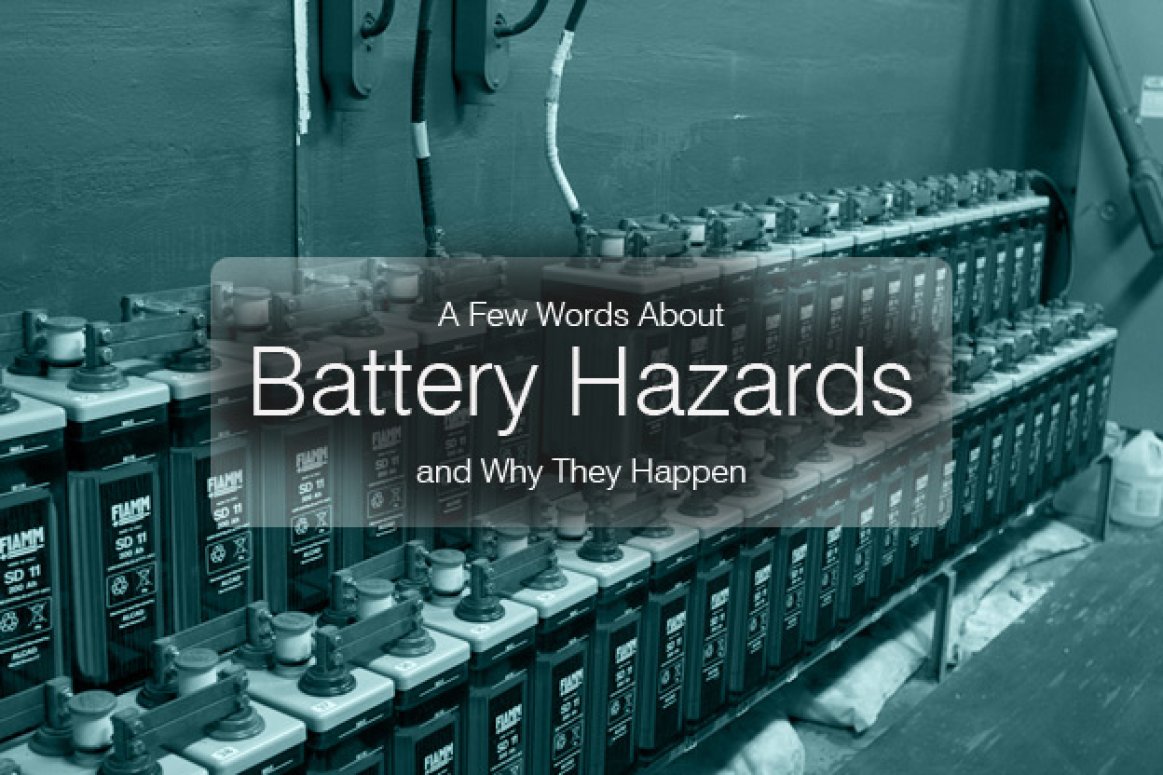
Shorted Cell
Cell short circuits can be caused by several conditions, which include the following:
- Faulty separators
- Lead particles or other metals forming a circuit between the positive and negative plates
- Buckling of the plates or
- Excessive sediments in the bottom of the jar.
The primary cause of some of these occurrences is overcharging and overdischarging of the battery, which causes sediment to build up due to flaking of active material and buckling of cell plates.
Overcharging and overdischarging of batteries should be avoided at all costs.Short circuits cause a great reduction in battery capacity. With each shorted cell, battery capacity is reduced by a percentage equal to one over the total number of cells.
Gas Generation
A lead-acid battery cannot absorb all the energy from the charging source when the battery is nearing the completion of the charge.
This excess energy dissociates water by way of electrolysis into hydrogen and oxygen. Oxygen is produced by the positive plate, and hydrogen is produced by the negative plate.
This process is known as gassing. Gassing is first noticed when cell voltage reaches 2.30-2.35 volts per cell and increases as the charge progresses.
At full charge, the amount of hydrogen produced is about one cubic foot per cell for each 63 ampere-hours input. If gassing occurs and the gases are allowed to collect, an explosive mixture of hydrogen and oxygen can be readily produced. It is necessary, therefore, to ensure that the area is well ventilated and that it remains free of any open flames or spark-producing equipment.
As long as battery voltage is greater than 2.30 volts per cell, gassing will occur and cannot be prevented entirely. To reduce the amount of gassing, charging voltages above 2.30 volts per cell should be minimized (e.g., 13.8 volts for a 12 volt battery).
Battery Temperature
The operating temperature of a battery should preferably be maintained in the nominal band of 60-80°F. Whenever the battery is charged, the current flowing through the battery will cause heat to be generated by the electrolysis of water.
The current flowing through the battery (I) will also cause heat to be generated (P) during charge and discharge as it passes through the internal resistance (Ri), as illustrated using the formula for power in equation below:
P=I2Ri
Higher temperatures will give some additional capacity, but they will eventually reduce the life of the battery. Very high temperatures, 125°F and higher, can actually do damage to the battery and cause early failure.
Low temperatures will lower battery capacity but also prolong battery life under floating (i.e., slightly charging) operation or storage. Extremely low temperatures can freeze the electrolyte, but only if the battery is low in specific gravity.
Conclusion
Battery hazards are summarized below. Battery Hazards Summary Short circuits cause a great reduction in battery capacity.
To prevent short circuits in a battery, overcharging and overdischarging should be avoided at all costs. The adverse effect of gassing is that if gassing occurs and the gases are allowed to collect, an explosive mixture of hydrogen and oxygen can be readily produced.
To reduce the amount of gassing, charging voltages above 2.30 volts per cell should be minimized. Whenever the battery is charged, the current flowing through the battery will cause heat to be generated by the electrolysis of water and by I2Ri power generation.
Higher temperatures will give some additional capacity, but they will eventually reduce the life of the battery. Very high temperatures, 125°F and higher, can actually do damage to the battery and cause early failure.
Originally published on Electrical Engineering Portal by Edvard Csanyi.